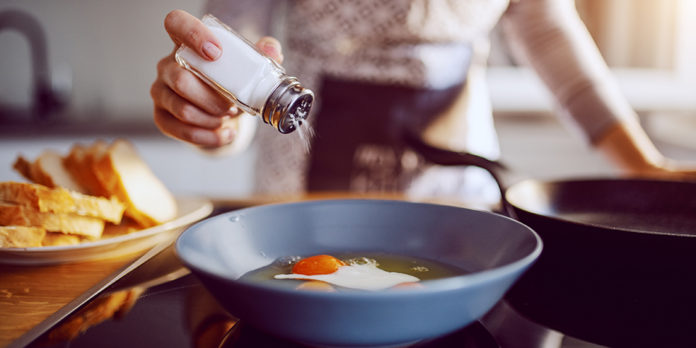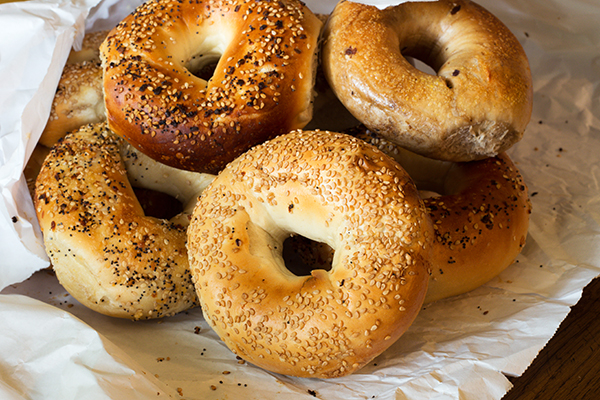It’s too simplistic to think of sodium as “bad.”
Yes, you should watch your daily salt intake, but that doesn’t mean all sodium in your diet should get the boot.
“Sodium is an essential mineral in your body to help maintain fluid balance, muscle contraction, nerve conduction, and more,” explains Chelsey Amer, M.S., R.D.N., owner of Chelsey Amer Nutrition.
There’s just one catch: Yes, sodium plays crucial roles in your body, “but it’s only needed in fairly small amounts,” she explains.
The trouble is, salt is added to plenty of packaged foods we eat.
Here’s what you need to know about your daily salt intake and whether you need to break up with the salt shaker.
What Is the Recommended Daily Salt Intake?
The Dietary Guidelines for Americans recommend adults limit sodium to less than 2,300 mg per day.
But there’s more to that number.
Table salt is only about 40% sodium, explains Dana Ellis Hunnes, Ph.D., M.P.H., R.D., senior dietitian at UCLA Medical Center and author of the upcoming book Recipe For Survival.
A full teaspoon of salt will put you at roughly that 2,300 mg mark.
(One teaspoon of salt weighs approximately 5 grams or 5,000 mg.)
But this number is just a general recommendation, not necessarily the right fit for everyone.
Why limit an essential mineral?
Sodium makes you retain water, which increases your blood volume, Hunnes explains. This, in turn, may increase blood pressure.
Over time, high blood pressure can potentially harm the kidneys and blood vessels of the heart and brain, she adds.
How Much Salt Is Too Much?
The general recommended daily salt intake isn’t suitable for everybody.
For some people, even 2,300 mg is too much sodium. Hunnes says that includes people with:
- hypertension
- certain heart conditions
- kidney disease
- other medical conditions
“It is recommended that they eat even less sodium than this,” she adds, since a potential increase in blood pressure or kidney damage is more dangerous.
Individuals with those conditions are usually told to keep their daily sodium intake below 1,500 mg.
Barring advice from a doctor, you can safely follow the 2,300 mg recommendation, says Hunnes.
But the average American consumes far more than that each day. On average, we consume 3,393 milligrams per day, with a range of about 2,000 to 5,000 mg per day.
And some people may actually need a slightly higher daily salt intake than others.
“If you’re sweating profusely, from extreme exercise or physical labor outside on a hot day, for instance, you may need to replenish this essential electrolyte to maintain proper fluid balance in your body,” explains Amer.
But that’s not a free pass to pile on the salt!
If you have questions about exactly how much salt you need each day, it’s best to talk to your doctor or a registered dietitian about your recommended daily salt intake.
6 Sneaky Sources of Salt In Your Diet
Many store-bought foods have high sodium content, and it’s not necessarily the ones you’d suspect.
A considerable 44% of the sodium in the average American’s diet comes from just 10 food categories.
1. Bread
“Bread also commonly has more sodium than you would suspect,” says Amer.
“Always flip over the package to check the label, especially if you’re salt-sensitive. Bread was the number one source of sodium, the study found.
A plain bagel has 430 mg of sodium!
2. Sandwiches
Maybe now it’s not so surprising that sandwiches are number three on the list of top sources of sodium.
Between the two slices of bread, processed deli meat, cheese, and condiments — all of which are high in sodium — a sandwich can pack a hefty load of salt.
3. Sauces
Store-bought marinades, salad dressings, and many pasta sauces have significant sodium content.
Just two tablespoons of your favorite BBQ sauce could contain up to 350 mg of sodium. (Try this healthier barbecue sauce recipe instead!)
Solution? Make homemade salad dressing to cut down on the sodium.
4. Cheese
Even cheeses we love for other reasons are high in sodium.
Cottage cheese, for example, “is a great high-protein food, but usually contains a lot of sodium,” notes Amer. (Like 459 mg in 1/2 cup!)
That doesn’t mean you can’t enjoy it. Amer notes that its high sodium content is “important to keep in mind in the context of your overall day.”
5. Chicken
Some chicken breasts at the grocery store have saline solution (translation: saltwater) pumped into them to appear plumper.
You think you’re just getting meat, but you’re getting sneaky sodium along with it.
Read the label to make sure yours doesn’t contain added salt.
6. Soup
Your favorite soups (canned or from a restaurant) can contain extremely high levels of sodium.
Just one cup of canned chicken noodle soup contains about one-third (790 mg!) of your daily recommended sodium intake.
One way to take control of your daily salt intake is to skip store-bought soups and make your own — here are 25 healthy soup recipes to choose from!




























